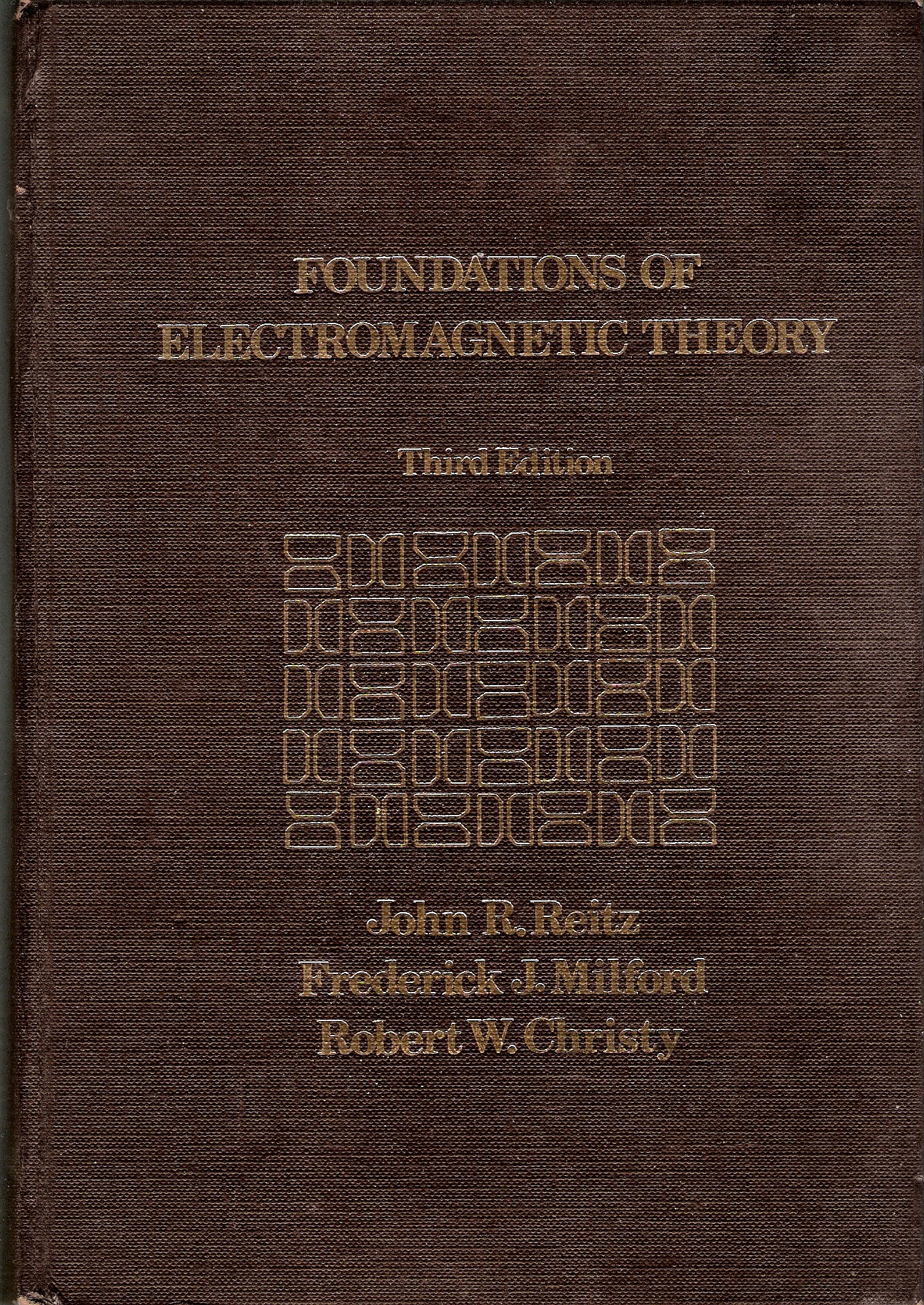Copies of the classnotes are on the internet in PDF format as given below. The "Proofs of Theorems" files were prepared in Beamer and they contain proofs of results which are particularly lengthy (shorter proofs are contained in the notes themselves). The "Printout of Proofs" are printable PDF files of the Beamer slides without the pauses. These notes and supplements have not been classroom tested (and so may have some typographical errors).
Chapter 1. Vector Analysis.
- Section 1.1. Defintitions.
- Section 1.2. Vector Algebra.
- Section 1.3. Gradient.
- Section 1.4. Vector Integration.
- Section 1.5. Divergence.
- Section 1.6. Curl.
- Section 1.7. The Vector Differential Operator ∇.
- Section 1.8. Further Developments.
- Section 1.9. Summary.
Chapter 2. Electrostatics.
- Section 2.1. Electric Charge.
- Section 2.2. Coulomb's Law.
- Section 2.3. The Electric Field.
- Section 2.4. The Electrostatic Potential.
- Section 2.5. Conductors and Insulators.
- Section 2.6. Guass's Law.
- Section 2.7. Applications of Gauss's Law.
- Section 2.8. Application of Gauss's Law.
- Section 2.9. Multipole Expansion of Electric Fields.
- Section 2.10. The Dirac Delta Function.
- Section 2.11. Summary.
Chapter 3. Solution of Electrostatic Problems.
- Section 3.1. Poisson's Equation.
- Section 3.2. Laplace's Equation.
- Section 3.3. Laplace's Equation in One Independent Variable.
- Section 3.4. Solutions to Laplace's Equation in Spherical Coordinates. Zonal Harmonics.
- Section 3.5. Conducting Sphere in a Uniform Electric Field.
- Section 3.6. Cylindrical Harmonics.
- Section 3.7. Laplace's Equation in Rectangluar Coordinates.
- Section 3.8. Laplace's Equation in Two Dimensions. General Solution.
- Section 3.9. Electrostatic Images.
- Section 3.10. Point Charge and Conducting Sphere.
- Section 3.11. Line Charges and Line Images.
- Section 3.12. System of Conductors. Coefficients of Potential.
- Section 3.13. Solutions of Poisson's Equation.
- Section 3.14. Summary.
Chapter 4. The Electrostatic Field in Dielectric Media.
- Section 4.1. Polarization.
- Section 4.2. Field Outside of a Dielectric Medium.
- Section 4.3. The Electric Field Inside a Dielectric.
- Section 4.4. Gauss's Law in a Dielectric. The Electric Displacement.
- Section 4.5. Electric Susceptibility and Dielectric Fluid.
- Section 4.6. Point Charge in a Dielectric Fluid.
- Section 4.7. Boundary Conditions on the Field Vectors.
- Section 4.8. Boundary-Value Problems Involving Dielectrics.
- Section 4.9. Dielectric Sphere in a Uniform Electric Field.
- Section 4.10. Force on a Point Charge Embedded in a Dielectric.
- Section 4.11. Summary.
Chapter 5. Microscopic Theory of Dielectrics.
- Section 5.1. Molecular Field in a Dielectric.
- Section 5.2. Induced Dipoles. A Simple Model.
- Section 5.3. Polar Molecules. The Langevin-Debye Formula.
- Section 5.4. Permanent Polarization. Ferroelectricity.
- Section 5.5. Summary.
Chapter 6. Electrostatic Energy.
- Section 6.1. Potential Energy of a Group of Point Charges.
- Section 6.2. Electrostatic Energy of a Charge Distribution.
- Section 6.3. Energy Density of an Electrostatic Field.
- Section 6.4. Energy of a System of Carges Conductor. Coefficients of Potential.
- Section 6.5. Coefficients of Capacitance and Induction.
- Section 6.6. Capacitors.
- Section 6.7. Forces and Torques.
- Section 6.8. Force on a Charge Distribution.
- Section 6.9. Thermodynamic Interpretations of Electrostatic Energy.
- Section 6.10. Summary.
Chapter 7. Electric Current.
- Section 7.1. Nature of the Current.
- Section 7.2. Current Density. Equation of Continuity.
- Section 7.3. Ohm's Law. Conductivity.
- Section 7.4. Steady Currents in Continuous Media.
- Section 7.5. Approach to Electrostatic Equilibrium.
- Section 7.6. Resistance Networks and Kirchoff's laws.
- Section 7.7. Microscopic Theory of Conduction.
- Section 7.8. Summary.
Return to Bob Gardner's home page

